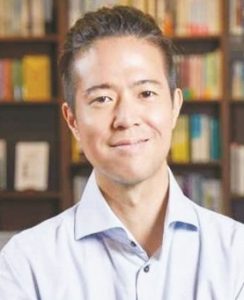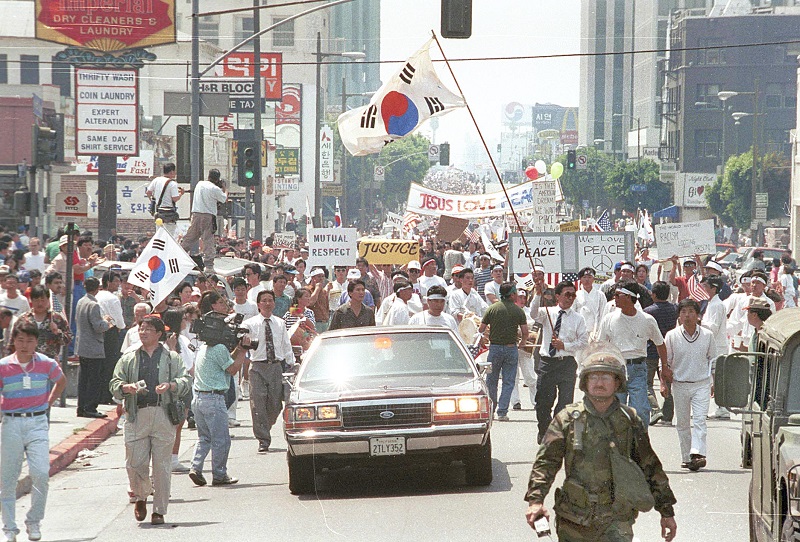
By Joseph Juhn
The author is a documentary filmmaker of “Jeronimo” and “Chosen”.
[Last of three-part column: 70 year of US-ROK alliance]
During the commemoration of Korea’s National Liberation Day, the President of the Republic of Korea broached an unfamiliar subject. In a ceremony commemorating the historical day when the Korean Peninsula was liberated from Japanese colonial rule, he emphasized the “70th anniversary of the U.S.-Korea alliance,” presenting the U.S.-Korea relationship as the central to the liberation narrative. Despite the fact that the liberation from Japan occurred eight years before the establishment of the U.S.-Korea alliance, the President repeated the word “alliance” six times in his speech. Ultimately, the speech concluded with a rare confrontation between the alliance of South Korea, the United States, and Japan, which upheld democracy, and North Korea, a communist state, and its sympathizers who were described as anti-national forces.
In a previous article, it was argued that the narrative of the U.S.-Korea relationship should be reconstructed through the diverse and complex perspectives of Korean Americans, who hold the strongest sense of ownership in this relationship. Defining the essence of the U.S.-Korea relationship based on the 1953 U.S.-Korea Mutual Defense Treaty reduces the relationship to one where the United States is positioned as the “savior,” safeguarding South Korea against communism and leading it to prosperity, while South Korea is relegated to the role of the “recipient” in need of salvation. However, perpetuating and emphasizing such comparative hierarchies in international relations would not be a fair assessment, not only for South Korea but also for the United States.
For Korean Americans, 2023 marks not only the 70th anniversary of the U.S.-Korea alliance but also the 120th anniversary of Korean immigration to the United States. While each Korean American may have different events they consider important, Edward Said, a pioneer in post-colonial studies, focuses on these diverse, unconsolidated perspectives within the diaspora. When there are multiple entry points for contemplating a phenomenon, it recognizes many possibilities that can coexist, rather than getting absorbed in national ideologies. Let me provide a few examples.

The beginning of the U.S.-Korea relationship can be traced back to the Treaty of Amity and Commerce between Korea and the United States in 1882. According to the treaty, the United States had an obligation to guarantee Korea’s security if it faced unjust aggression from other countries. However, in 1905, U.S. President Roosevelt dispatched Secretary of War Taft to Japan, leading to the infamous Taft-Katsura Agreement, which tacitly sanctioned Japan’s colonization of Korea.
The year 1903 is significant for Korean Americans. Starting with 121 individuals on January 13, over the next two years, more than 7,000 Koreans arrived in Hawaii. They engaged in various activities, such as military training, diplomatic efforts, enlightenment movements, and fundraising, to support the independence movement on the Korean Peninsula. At the same time, they settled in Hawaii, California, and other regions, contributing to the economic development of the United States as immigrant laborers and laying the initial foundations of Korean Ameri-can society.
From September 1945 to August 15, 1948, was also a crucial period. During these three years, the U.S. military government governed the southern half of the Korean Peninsula as the sole administrative authority. Kathleen Stephens, former U.S. Ambassador to South Korea, emphasized the importance of understanding this challenging period after liberation, stating, “While we generally consider the start of U.S.-Korea relations to be the Korean War on June 25, understanding the difficult period of the U.S. military government after liberation is essential to grasping the complexity of U.S.-Korea relations.”
The outbreak of the Korean War in 1950, followed by the armistice in 1953, marked the foun-dation of the U.S.-Korea alliance. Coincidentally, from this time onward, Korean War orphans began to be adopted by American families, with their numbers now exceeding 200,000. As mentioned in a previous article, it’s essential to consider the symbolism of U.S. military chaplains, adoptees, and their descendants, who are hidden in the shadow of the nation-centric narrative, in the context of the U.S.-Korea relationship.
The year 1965 is also noteworthy. The United States passed the Immigration and Nationality Act, opening immigration from Asian countries, including Korea, which was previously restricted to North and Western European nations. Subsequently, Korean immigration to the United States surged dramatically, and legal foundations were established for Korean Americans, who now number nearly 2 million, to form a community.

However, perhaps the most important day for Korean Americans is April 29, 1992, commonly known as the “LA Riots” or “Saigu.” After the acquittal of police officers in the Rodney King trial, angry citizens and rioters attacked and looted over 2,300 Korean-owned businesses, causing irreparable damage. The Korean American community became one of the biggest victims of biased media, an unfair judicial system, irresponsible law enforcement, and institutional racial discrimination. Professor Edward Chang at UC Riverside expressed that through Saigu, Koreans transitioned from being “immigrants” to “Korean Americans.” Those who had prioritized economic stability and their children’s education before the riots began to recognize the importance of political visibility and race relations in America, reemerging as community-conscious, responsible ethnic minority in the United States.
2020 is also a significant year to remember. For the first time in history, five Korean Ameri-cans ran for the U.S. House of Representatives, with four of them winning their seats. They may vary in their political worldview, but they are all at the forefront of strengthening the U.S.-Korea relations in their respective positions. In the aftermath of the rise of anti-Asian hate crimes throughout the United States with the onset of the COVID-19 pandemic, Korean Americans expanded their sense of belonging beyond the previously ethnocentric Korean American community to embrace a broader identity as Asian Americans. Although this identity is still in an experimental and transitional phase, it holds significance in allowing Korean Americans to contemplate peaceful coexistence with a broader spectrum of individuals.
As such, Korean Americans possess the ability to reflect deeply on both the positive possibilities as well as the dark past of the U.S.-Korea relationship through multiple evolving narratives. It’s time to move beyond the government’s exclusive narrative that remains stuck in 1953.




